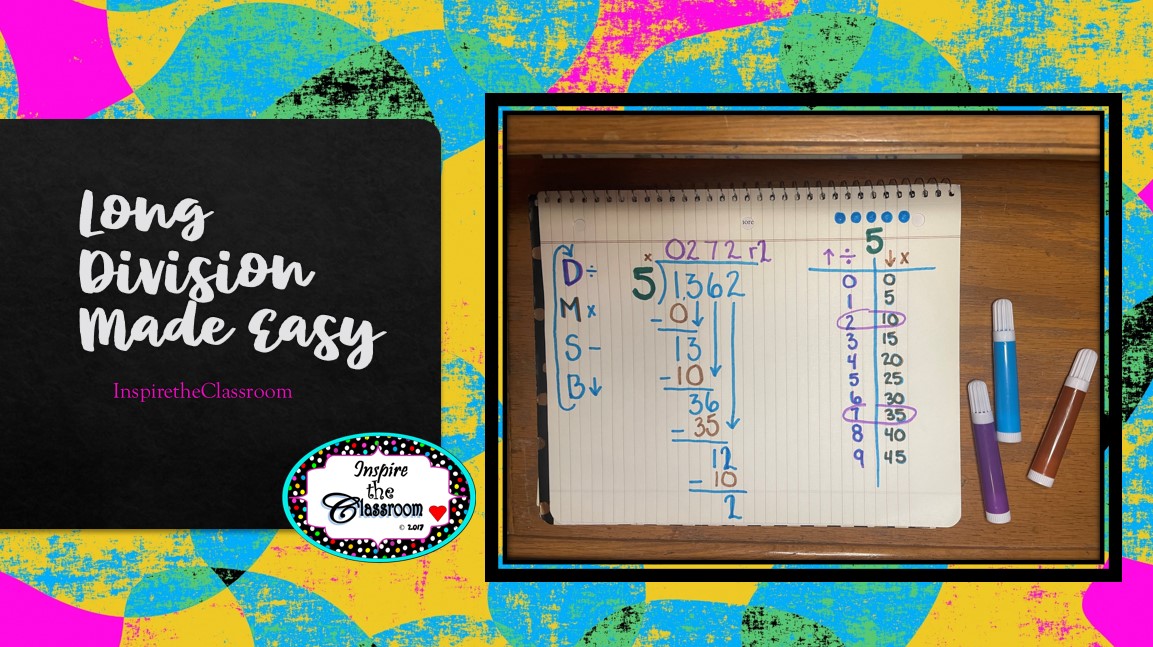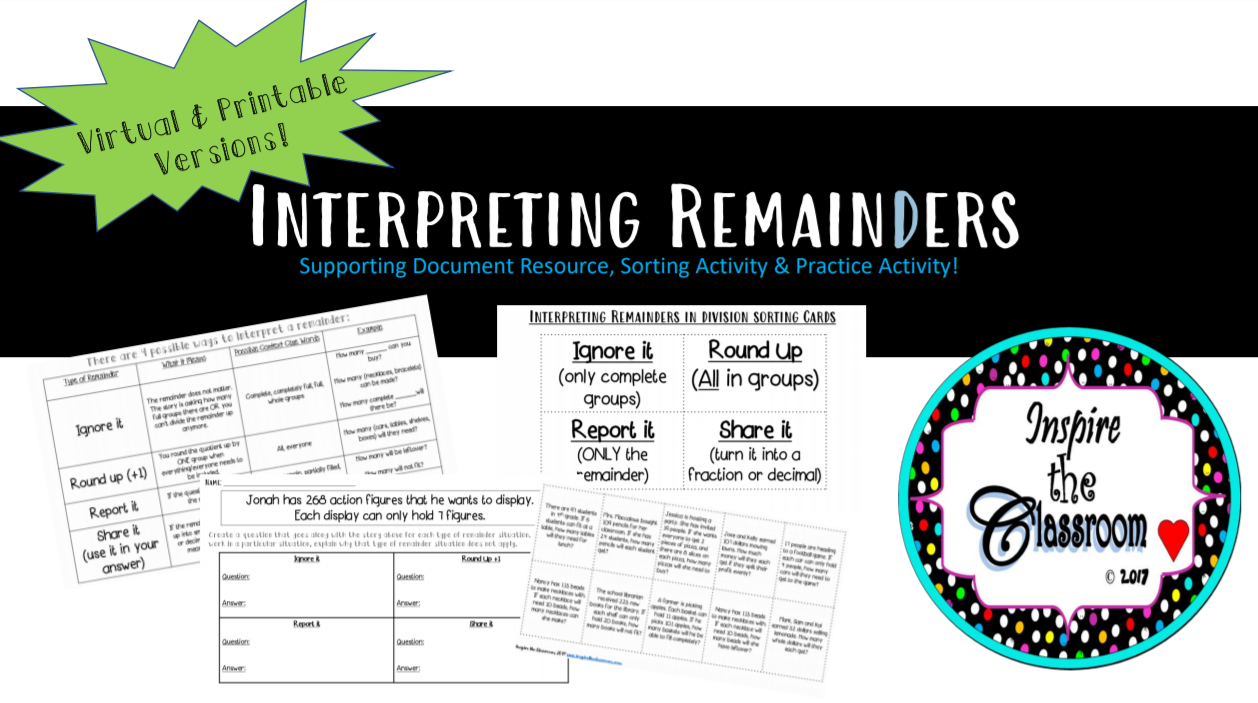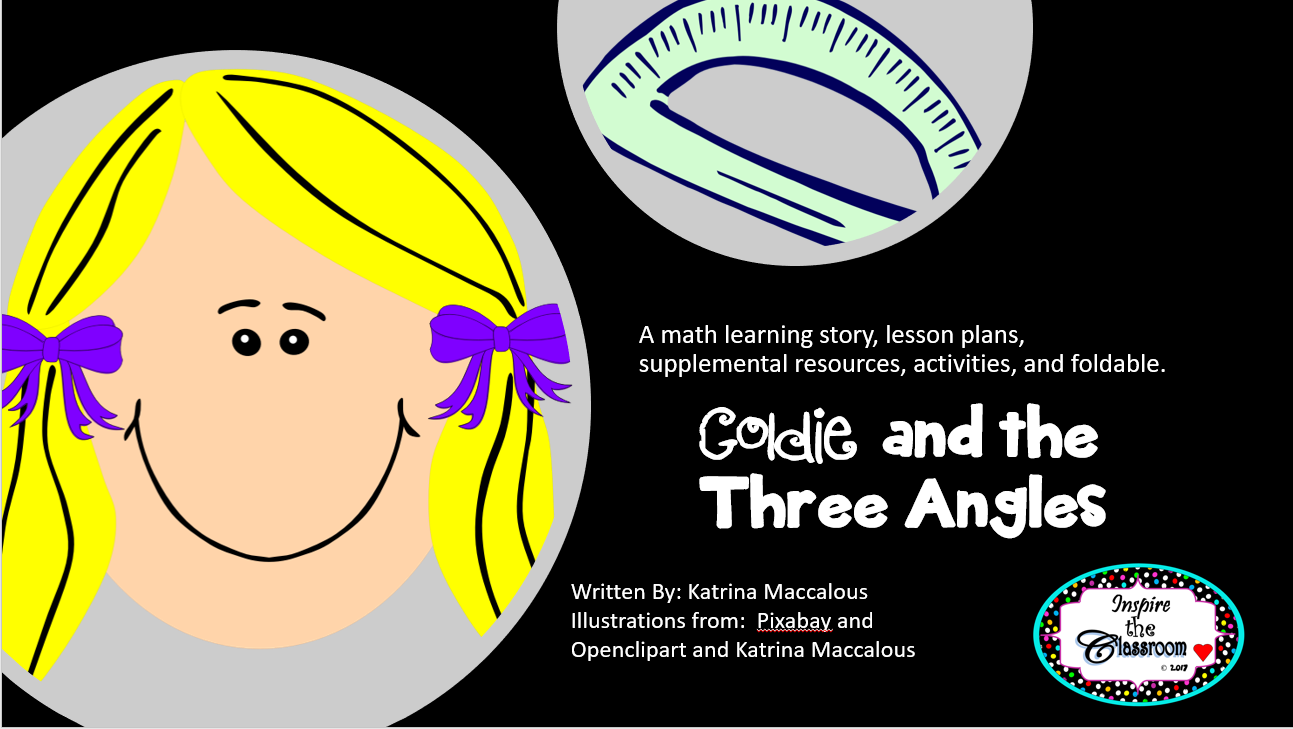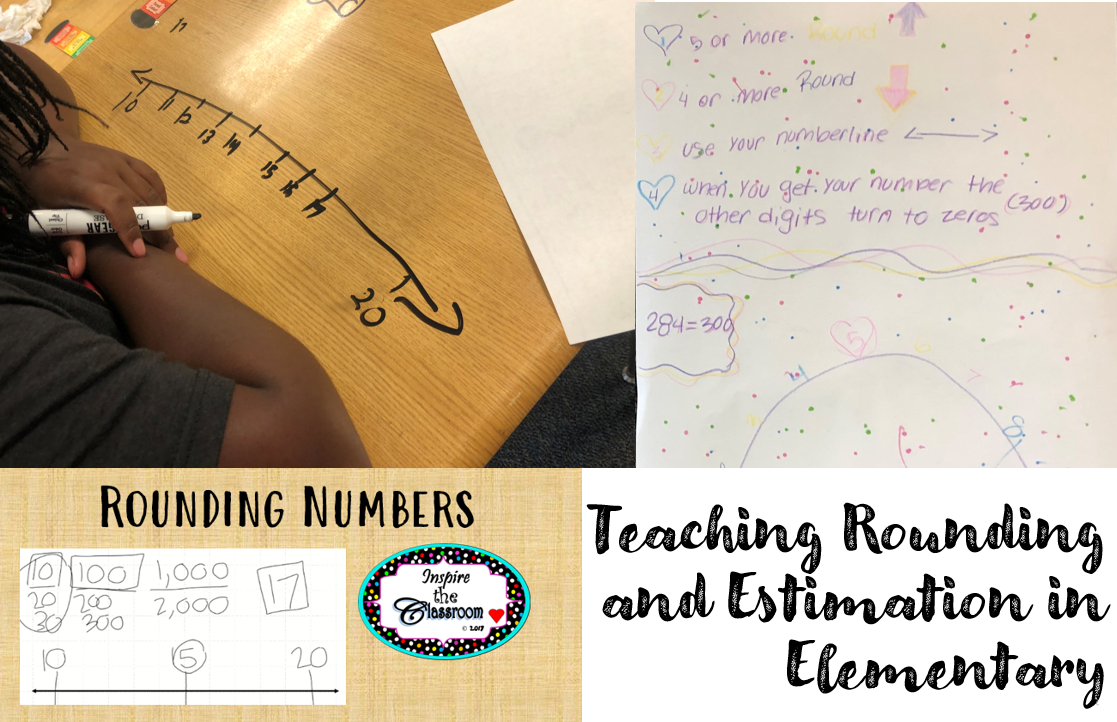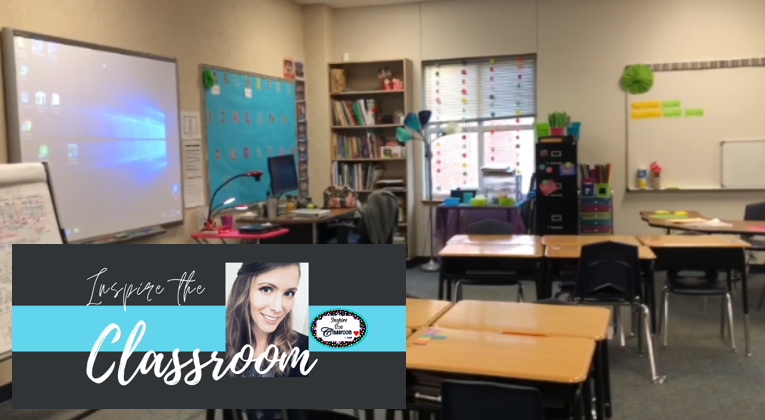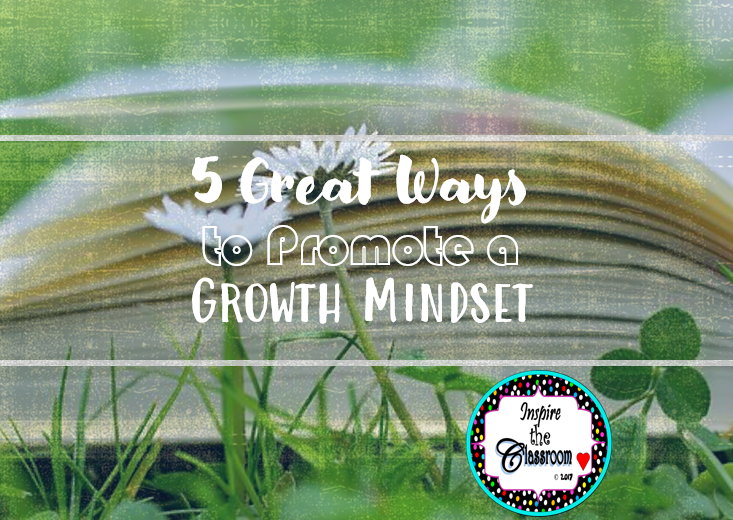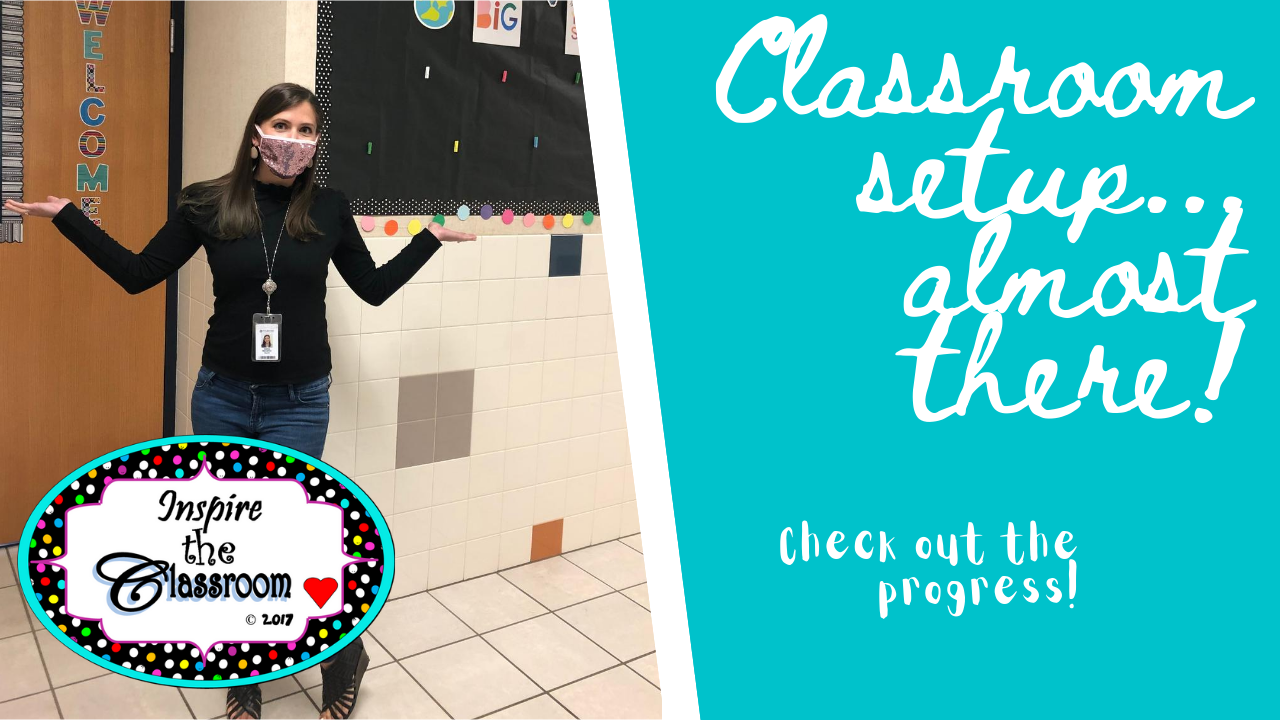Long Division Made Easier
By: Katrina Maccalous, MS Ed
Long division is understandably one of the more challenging processes students are expected to master in 4th and 5th grade. Many times students have not yet mastered their multiplication facts, while others are still struggling to develop conceptual understandings of multiplicative reasoning. In a perfect world we could wait until these concepts are internalized before introducing standard algorithms, but state-standards and standards-based assessments require students to use the algorithms to solve multi-digit problems. We must also hold high expectations for every child, and that includes exposing them to grade-level content with the appropriate scaffolds in place based on students’ current level of understanding.
This is precisely what this post is about–scaffolding instruction to allow every student the opportunity to work through these processes. This particular post is on how to support students with the long division algorithm. I hope you find this useful!
Firstly, what is long division?
According to Oxford Languages, long division is “arithmetical division in which the divisor has two or more figures, and a series of steps is made as successive groups of digits of the dividend are divided by the divisor, to avoid excessive mental calculation.” The key to this definition is that it is a “series of steps” or processes. So while the strategies I will be sharing can support these steps, it is important that the conceptual understandings are reinforced, so that students understand what it is and why it works. My method incorporates elements that can help with this, but continued inquiry into the place-value connections of the distributive property and/or partial quotients are needed.
Note: These strategies are for use after students have been introduced to division and students have spent time making connections to other strategies/models such as arrays, area, inverse operations, physical manipulatives, etc.
The Strategies
Ratio Tables (aka input output tables): These tables are fantastic tools that have so many connections within math and will be used in more complex ways in secondary math classrooms. However, I find them wonderful tools to introduce for multiplication and division. (Bonus: They are basically input output tables, and they are excellent for proportions and fractions.) To support even my most struggling math students, I include dots (see below) for them to count on (repeated addition) in order to create their table. In my example below, I have not yet labeled the chart to indicate what/number each column represents , but I will label each with the correct mathematical vocabulary depending on the operation (i.e. dividend, divisor, quotient OR factor/dimension & product/area). We will come back to this table later in the process.

A Student-Friendly Acronym (DMSB/DMSBR): Acronyms are fantastic tools for remembering the steps of a process, and there are many that can be used for long division. Some examples are included below, but you can create one with your students (honestly, this is more fun, and they will likely have more success remembering it). For acronyms that do not include an R (repeat), you can draw an arrow that shows students to start back over and repeat the process.
Tip: For students who might need something tactile to help them internalize the steps, you can write the steps on an index card and use a paperclip, clothespin, or other object to allow them to mark the current step they are on.
- Does Mcdonalds Serve Burgers Rare?
- Dad, Mom, Sister, Brother
- Dirty Monkeys Smell Bad


Color-Code & Label!
Let’s use a simple example to demonstrate this next step. I chose to use the number 5 as it is a number most children are comfortable skip counting by. You will need several colored pencils, markers, or crayons. Alternatively, labels are effective. It really just depends on the needs of your students.
I made my divisor (5) green, the quotients purple, and my dividend/products/totals brown. Labeling and/or color-coding helps students see where each number goes in the problems. Additionally, I have added those colors to my acronym to reinforce the steps and what they represent in the problem. I have also added arrows as an additional support (top, bottom).
Let’s Solve!
We begin by looking at the largest place value of our dividend. In this example, it is ONE. The first step is to DIVIDE. Since we are looking for a number of equal parts in division, we must first look at the column with the totals (brown).
DIVIDE (D): Prompt students to identify the closest we can get to 5 without going over. (If everything costs $5, and we have $1, how many things can we buy?- When in doubt, connect it to money!) In this case, the answer is ZERO. We need AT LEAST 5 to make one whole group. If we have less, we cannot make a group or “buy” anything. The closest to 5 (that’s not more than 5) is 0. Place a zero on top.
MULTIPLY (M): If we look to the left column, we see that means we made 0 groups of 5 (0 x 5 = 0). Place a zero under the one.
SUBTRACT (S): We need to identify how many did NOT make it into a group (i.e. what is remaining or leftover), so we need to subtract the total we started with (1) by how many total were placed into equal groups (0). 1-0=1. We have one leftover.
BRING DOWN (B): There are more numbers in our dividend, so we will bring down the next digit (3) and place it next to the remainder (1) to make the number 13. (Notice that in my example, I have drawn an arrow under the 3 to help students keep track of where they are in the problem.)
REPEAT (R or arrow): We now have 13 to place into equal groups of 5. You will repeat the steps from above looking this time for the MOST groups of 5 we can make out of 13 (Remember: We only have 13, so we can’t have more than our total). You will continue through these steps until there are no more numbers to bring down.
CHECK! The final step requires that student check their work with multiplication, remembering to add any remainder back in to the total.

These are the strategies I have found to be the most successful when working with a wide-range of learners. As with any process, it will require repetition and reinforcement, but hopefully these supports will help with this internalization. If you’re looking for a great activity to help students apply their new division skills, check out one of my favorite products on interpreting reminders (FREE for a limited time) or other products on TPT! You can read the post here!

If you enjoyed this post, please pin, follow us, and check out my other products and posts! Happy Teaching!

